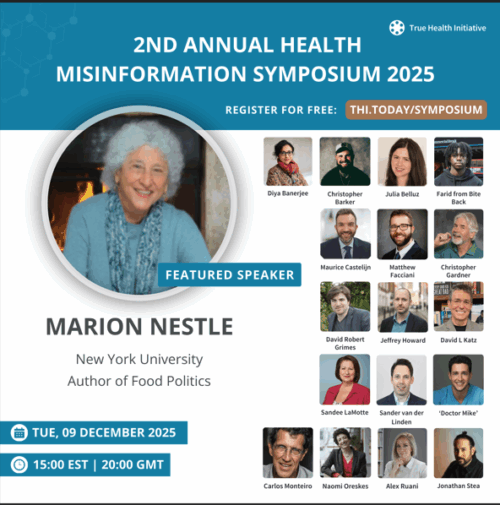On July 30, Center for Science in the Public Interest (CSPI)—in collaboration with representatives of a long list of distinguished health and consumer organizations (see below)–wrote Martha Coven of the Domestic Policy Council and Ezekiel Emanuel of the Office of Management and Budget urging them to encourage the FDA to take more vigorous enforcement action against misleading health claims on food packages.
Their petition responds to comments by the FDA’s Michael Taylor (discussed in a previous post) in a July 19 article for the Atlantic Food Channel, titled “How the FDA is picking its food battles.” In explaining why the FDA is backing off from doing anything about unsubstantiated health claims on food products, Taylor said:
FDA must pick its battles—and set its priorities—in a way that will best benefit the public health….We have no pre-market review authority over such claims, and, under prevailing legal doctrines concerning “commercial free speech,” the evidentiary requirements placed on FDA to prove that such claims are misleading are significant and costly to meet. Moreover, meeting them requires tapping the same team of nutritionists, labeling experts, and lawyers who are working on our other nutrition initiatives.
We’re also conscious of the cleverness of marketing folks, who, once we prove today’s claim is misleading, can readily come up with another one tomorrow. Going after them one-by-one with the legal and resource restraints we work under is a little like playing Whac-a-Mole, with one hand tied behind your back.
So, we must make choices….especially considering the other high-priority nutrition and food safety initiatives that compete for FDA’s finite resources. We’ll consider all possibilities, but, in the meantime, we call on the food industry to exercise restraint, and we welcome the scrutiny CSPI and the media give to this issue.
Clearly, I was not the only one dismayed by this statement, which appears to be an open invitation to food companies to do whatever they like with health claims. Indeed, Taylor’s statement reminded me of the Bush Administration’s FDA which, in 2003, announced that it had lost so many first amendment health claims cases in court that it no longer intended to fight them.
But Taylor’s statement is also an open invitation to food advocates to get busy, as CSPI and the other signers of this letter have now done. The letter, dated July 30, 2010, is a follow up to a June 11 meeting on FDA/USDA Food Labeling Reform Efforts:
At Zeke’s suggestion, we are attaching a Priority List/Timetable Chart that provides an overview of the recommendations we made at our meeting and delineates how those recommendations intersect. As we discussed:
• We commend the Food and Drug Administration (FDA) for increasing the number of enforcement actions it has taken against misleading food labeling, and we urge the agency to increase those efforts. We also commend the FDA’s initiative to develop a system for disclosing key nutrition information on the fronts of food labels. However, we emphasize that the existing Nutrition Facts panel must also be modernized. In particular, nutrition information must be based on up-to-date serving sizes, a Daily Value for added sugars must be established and added to the existing Nutrition Facts panel, and “Calories per serving” must be displayed more prominently. Revisions to the Nutrition Facts panel and the development of a front-of-pack disclosure system are closely intertwined and should be developed concurrently.
• We urge the Domestic Policy Council to ask the FDA to ensure that any front-of-pack labeling scheme is not undercut by deceptive health-related claims on the fronts of food packages. Such claims, if unabated, will divert attention from any front-of-pack scheme the FDA develops. Since our meeting, the Federal Trade Commission (FTC) issued a consent order prohibiting claims that a food product could strengthen immunity because the claim lacked sufficient clinical evidence. Such claims are called “structure/function” claims by the FDA. The FDA should take a consistent position regarding the use of those claims. In addition, the FDA should address claims exaggerating the presence of healthy ingredients stressed in the U.S. Dietary Guidelines such as whole grains, fruits, and vegetables. For example, failure to remedy claims such as “Made with real fruit” on products that contain little fruit will detract from a declaration of sugar content that the FDA may specify in a front-of-pack labeling scheme, thus frustrating the Administration’s attempts to reduce childhood obesity.
• One way to remedy exaggerated claims for healthy ingredients (other than prohibiting them completely) is for the FDA to revise the ingredient list to require that the percentage of key ingredients such as fruit be disclosed in a clear, easily readable manner. FDA could also require that ingredient lists group all sources of added sugars to provide consumers with a clearer indication of the amount of added sugar in a product. The First Lady has recognized that ingredient labeling reform is an integral part of the Administration’s broader efforts to combat childhood obesity. The U.S. Department of Agriculture (USDA) is already working on new formats for ingredient labeling. We support those efforts and request the Council to encourage the FDA to follow USDA’s approach.
• In regard to a timetable, the recommendations we have made are closely intertwined with efforts already ongoing at the FDA. In some cases, they are necessary to ensure that those ongoing efforts by FDA succeed. We, therefore, urge the Council to recommend that the FDA expand its food labeling reform initiatives to include these additional issues and address them concurrently. Additional efforts that complement existing FDA labeling reform initiatives should commence as soon as the first set of initiatives is published in the Federal Register. All initiatives should be finalized by October 2012. This request is based on the fact that the FDA implemented the Nutrition Labeling and Education Act of 1990 in two years. The reform efforts we request are more limited than the requirements of the 1990 Act, and the FDA should be able to accomplish them by 2012 based on the agency’s previous performance on such matters.
• Rep. DeLauro, Chair of the House Agriculture Appropriations Subcommittee, asked the FDA how many FTEs the agency would need to issue regulations to revise the Nutrition Facts panel, increase the prominence of calories per serving, require caffeine labeling, and establish a daily value for added sugars, as well as other issues. The FDA stated that approximately “10-12” additional FTE’s would be necessary to address such concerns. Agriculture, Rural Development, Food and Drug Administration, and Related Agencies Appropriations for 2005: Hearings Before a Subcomm. of the House Comm. on Appropriations, 108th Cong. 2d Sess. 323 (2004). While the FDA’s response at the time involved some issues not covered by our current requests, we believe that the FDA’s estimate is still reasonable, and we urge the Council and the Office of Management and Budget to work with the FDA to ensure that the FDA devotes additional resources to this effort.
We welcome the opportunity to assist the Administration and look forward to continuing our dialogue.
The letter is signed by Bruce Silverglade, Director of Legal Affairs, CSPI and representatives of Consumers Union, American Public Health Association, American Medical Association, American Cancer Society Cancer Action Network, American Heart Association, American Society of Bariatric Physicians, American Diabetes Association, American Dietetic Association, Alliance for Retired Americans, Society for Nutrition Education, American Institute for Cancer Research, and Directors of Health Promotion and Education.
Let’s hope the FDA pays attention and gets busy on these issues.



